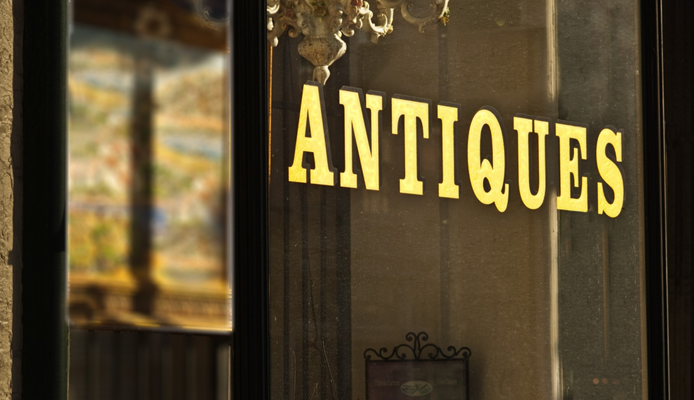The antique industry is worth a staggering $12 billion, which shows how many vintage enthusiasts there are.
Instead of poking around dusty stores, you can buy antiques online to save a huge amount of time and effort. But there is an etiquette to take on board to streamline the buying process.
Sounds like you? Luckily; you’ve come to the right place. Here are 10 tips for buying vintage antiques online.
1. Get Inspired by Brick-and-Mortar Stores
Before shopping online, browse antique stores in your area. This will give you an idea of what’s available and which pieces pique your interest.
If you have a specific interest, find stores that cater to that. For instance, if you’re passionate about challenge coins, such as fire department badges, frequent stores that excel in that niche to get started.
2. Shop Around
Like you would in-person, take your time shopping around vintage stores. The beauty is this gives you valuable insight into how much each piece costs, so you can make an informed decision when you’re buying antiques online. Once you have a general idea, it’s easier to know who is overselling their vintage items and which ones are a good deal.
3. Research the Seller
When you’ve found a potential seller, it’s important to research the antique shop to check if it’s credible. You should browse their previous sales and customer reviews to learn more about them. If you’re still questioning their credibility, ask the seller about the piece and only choose one who shows in-depth knowledge and passion about their niche.
You should also ask each prospect about the authenticity of their items. As a general rule, most reputable ones are affiliated with a regulated body like NAADA in the U.S.
4. Search Terms Properly
Experts who buy antiques understand the importance of using search tricks, especially on eBay. This is a great way to save time when you’re hunting for a specific item. Note, it’s wise to use the extra filters because “vintage chair” will bring up thousands of listings to shift through.
Instead, enter “set of six 18th century dining chairs” and you’ll get a far narrower search. You should also consider the distance of the seller and the condition, so you’re not getting a dud. And, if you have time, run a search with spelling mistakes because you may stumble across hidden gems.
Further, set up Google and eBay alerts to receive notifications whenever your dream item is listed. But make sure you act quickly, especially if you need to bid on them.
5. Bookmark Your Favorite Sellers
Whenever you have a great experience with an online store, don’t forget to bookmark it. Creating a list is useful, especially if you can’t currently afford your dream piece, but are saving up. But this doesn’t mean you buy from the same sellers repeatedly; it’s important to broaden your horizons, too.
6. Be Prepared to Negotiate
Don’t be embarrassed to haggle items because you’ll likely land a lower price. A major benefit of buying antiques online is that you’re not face-to-face with the seller, so it’s easier to be comfortable. So, when you can, search for a “make an offer” button on the site and see how low you can go.
7. Ask for Detailed Photographs
Avoid listings that don’t have a photo or only have a blurred-out image. Instead, ask the seller for a detailed one, so you can check out the item’s condition and see if it’s worth the money. You should also ask for a video for a 360-view or additional photos until you’re happy.
Also, take notice of the item’s description as it should reveal its age, timber, and condition, especially if it’s been reconstructed over the years.
8. Know Your Measurements
You don’t want to spend thousands on a vintage item; only to find it doesn’t fit in your apartment. To avoid this problem, keep the room’s measurements with you and ask the seller for the item’s dimensions. Note, if the seller isn’t willing to share that with you, continue your search as it’s a red flag.
9. Don’t Rush the Process
Regardless of how excited you are about antique shopping, take your time. Don’t buy from the first seller you find as there could be better deals around. Also, it increases the risk of buying a fake item or suffering from buyer’s remorse, especially if it’s an outlandish item.
Instead, wait 24 hours, and if you can’t live without the item, then you’re good to go.
10. Check Out the Shipping Charges
Although it’s the least interesting part of the process, don’t overlook the logistics. Check out the item’s description or ask the buyer whether there are any shipping charges as it will drastically increase the price. To save time, filter listings by area code and you’ll only see sellers in your zip code.
Further, ask the seller about their returns policy, especially when you’re buying from individual sellers. You must take these onboard, so there aren’t any nasty surprises later on. And don’t forget to ask about potential hidden costs, such as restoration or re-upholstery, as that can be costly.
Tips for Buying Vintage Antiques
Hopefully, you’re now ready to buy the best vintage antiques for your home.
There are many factors to consider in your search, such as shopping around and researching each seller in-depth. You should also be prepared to negotiate and check out the shipping charges before making the purchase. Good luck!
Enjoyed this article? Awesome! Then check out the rest of our site for more tips and tricks.


